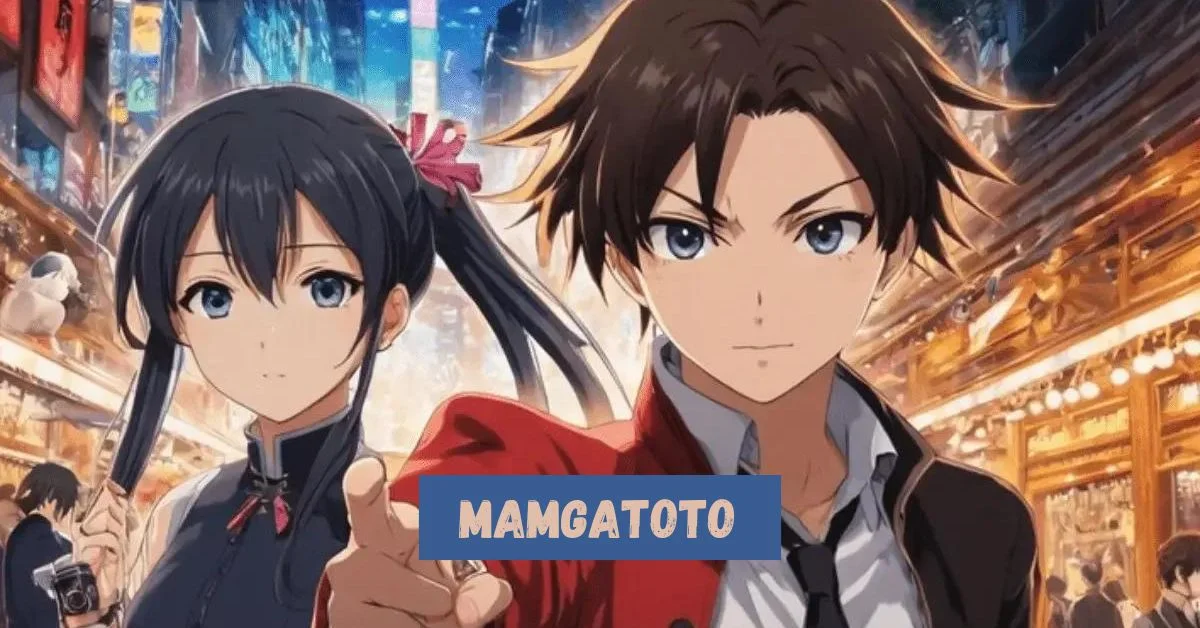Mamgatoto is a holistic concept that intertwines the joy of learning and playing for children with the rich cultural heritage of various global communities. It’s not just an educational tool but a legacy of traditions, rituals, and communal bonds that date back to ancient times. The name itself, derived from ancient languages, encapsulates the essence of nature, spirituality, and community life.
As a multifaceted cultural phenomenon, Mamgatoto offers parents and children a way to connect with the earth, celebrate the rhythms of life, and foster social harmony through carefully chosen educational toys and activities. This guide aims to explore Mamgatoto’s core principles and their role in nurturing your toddler’s growth while preserving the timeless practices that have been cherished and passed down through generations.
What is Mamgatoto?
The term “mamgatoto,” which may be unfamiliar to many, refers to the special relationship and interactive play that exists between a mother (or primary caregiver) and her kid. It is predicated on the idea that youngsters strengthen their bonds with their caregivers and pick up new abilities via play. Since it highlights the value of spending quality time learning and growing, this idea is sweeping the toddler activity market.
Historical Importance
Mamgatoto’s records go back several millennia and are entwined with the formation of prehistoric human cultures. Historical accounts and archeological discoveries indicate that Mamgatoto had a significant role in people’s social and spiritual lives. It was often associated with agricultural cycles, with planting and harvest seasons designated by festivals and ceremonies. These gatherings promoted a sense of community and mutual aid, which was critical for historical survival.
Cultural Influence
Over time, Mamgatoto has evolved to accommodate shifting social dynamics. Even after those modifications, core components endure and continue to shape innovative cultural behaviors. Nonetheless, Mamgatoto-related celebrations, dances, and songs remain widely observed and act as a link between the past and the present.
Contextual History and Cultural Importance
Mamgatoto illustrates how the communities that adopted it have changed in terms of their social, spiritual, and economic fabric. The roots can be found in the early exchanges between individuals and their surroundings, which signaled the beginning of a subculture that was passed down through the generations.
Background Information in History
The earliest Mamgatoto numbers point further back in time to historical civilizations that flourished in regions rich in natural resources. These communities placed a high value on agriculture, and Mamgatoto—a set of customs and beliefs meant to guarantee abundant crops and peaceful coexistence—arose. According to archeological evidence, rituals involving communal feasts, dances to invoke the benefits of nature and offerings to deities were performed during significant agricultural intervals.
Mamgatoto adapted to the shifting conditions of human society throughout recorded history. Novel farming practices gave rise to new customs and festivals. The core principles of Mamgatoto—appreciation for nature, network coherence, and non secular reverence—stayed the same throughout changes.
Cultural Importance
Mamgatoto promotes behaviors that encourage sustainability and respect for all living things, hence cultivating a strong bond between people and their natural environment. Mamgatoto rituals and galas are vibrant manifestations of a community’s identity and ideals. Social brotherly love is significantly impacted by these behaviors.
Festivals and community events provide a platform for people to come together, share experiences, strengthen relationships, preserve cultural past, and transmit knowledge to the next generation. Mamgatoto’s spiritual significance regards the herbal world as sacred, fostering care and respect for the natural world and impacting many facets of everyday existence.
Contemporary Modifications
In these modern times, Mamgatoto continues to adjust. The dynamic character of the way of life is replicated in new interpretations while traditional behaviors are retained. Mamgatoto’s elements have been adopted by environmental movements to promote ecological balance and sustainable living, underscoring its ongoing significance in tackling global issues.
Mamgatoto Around the World
Mamgatoto has had a profound impact on many different civilizations all over the world. Its versatility and resonance with various societies—each of which incorporates unique components while maintaining fundamental standards—are the sources of its widespread appeal.
Worldwide Presence
All around the world, Mamgatoto is well-known. It is a part of traditional agricultural galas in Asia, where the ceremonies commemorate the land and its cycles. Mamgatoto is observed in African communities during events where dance, storytelling, and music preserve and disseminate cultural values.
Additionally, indigenous cultures in the Americas have preserved rites that correspond with important environmental events, emphasizing harmony between humans and nature. These forms of Mamgatoto are related to the religious values and practices of these groups.
Modifications and Adjustments
Every custom applies to Mamgatoto that is specific to the values and customs of the community. For example, it is closely associated with Shinto ceremonies honoring natural events in Japan. Mamgatoto is included in medieval galas in European civilizations, fusing Christian and pagan customs.
In South America, particularly in Andean tribes, Mamgatoto is associated with Pachamama, the earth’s mother goddess, through rituals that seek benefits for network health and agricultural success.
Influence and Exchange of Cultures
Migration, change, and cultural trade have all contributed to Mamgatoto’s international expansion. People shared their customs with each other when they engaged with different civilizations, adding new elements to Mamgatoto and creating a global web of interwoven traditions.
Mamgatoto celebrations at contemporary fairs draw tourists from around the world and promote cross-cultural understanding. Through mutual cultural studies, these gatherings offer a forum for presenting a variety of viewpoints and fostering international tolerance.
Modern Festivities
Mamgatoto is observed in both conventional and innovative settings these days. Urban fairs are accessible to a wider target audience by incorporating modern elements like track concert events, artwork exhibitions, and culinary festivals. The essence of Mamgatoto, which emphasizes community, nature, and cultural history, is still present despite current diversifications.
In educational contexts, colleges and universities organize programs to inform students about the background and significance of Mamgatoto, inspiring a new generation to appreciate and preserve the subculture. These are frequently cooperative projects that promote a sense of global citizenship.
Obstacles and Preservation
Mamgatoto suffers difficult circumstances as a result of urbanization and cultural homogenization, despite its enormous allure. Groups and cultural organizations are working together to document and publicize these rituals as part of continuous efforts to preserve and revitalize ancient customs. This includes gathering oral histories, supporting local craftspeople, and incorporating Mamgatoto into activities related to cultural tourism.
customs and rituals
The customs and ceremonies surrounding Mamgatoto reflect its profound significance across a range of cultures, serving as a means of connecting with the hereafter and commemorating the present while also preserving the social and religious fabric of communities.
Conclusion
Mamgatoto transcends being merely a concept; it’s an enriching approach to a child’s formative years, blending education with emotional well-being. Embracing Mamgatoto’s principles when choosing educational toys or activities ensures a deeper, more rewarding journey of learning and discovery for both children and parents. Moreover, Mamgatoto is a gateway to a world rich in history and tradition, offering an opportunity for travelers to delve into and appreciate the beauty of local customs and landscapes. Whether you’re starting out with Mamgatoto at home or exploring its roots around the world, the path ahead promises limitless opportunities for personal growth and cultural connection




